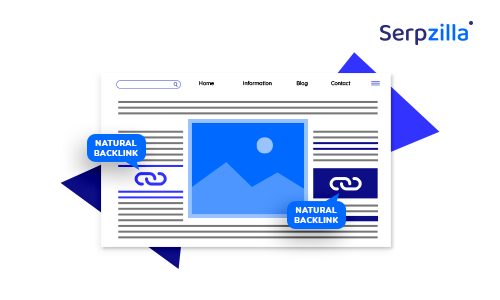According to our observations, when working with keywords, many experts make one mistake – they create a relatively narrow semantic core. As a result, the effect of website promotion – at best – is not as tangible as we hope, and sometimes even pretty unsatisfactory. In this article, we will tell you how to select keywords, what tools you can use for this, how large a list of keywords you need to achieve maximum results, and how to create such a list correctly.
1. What is a keyword list?
Your keyword list is simply a set of search queries (keyword or keyphrases) that are directly or indirectly related to the field of your website. There is no specific format for creating such lists. You can do it on paper, but better go with Google Sheets – easy to edit, store and transfer.
The list of keywords is recommended to be stored and updated regularly. There are several reasons for this:
- a list of keywords is a clear starting point by which you will be able to measure further success (or failure);
- such a list will give you a better understanding about your long-term goals;
- The list is also a valuable resource for other (or new) members of your team.
Google regularly releases updates to its search engine. One of such updates made the search much more sophisticated. Google learned to decipher both the information on your website, and user queries and match them. The engine can show your website in response to user queries, even if those contain no keywords from your website at all.
2. How long should your keywords list be?
The list should include all the relevant keywords you use, from niche terms and definitions, titles, categories, to different stages of the buying process you incorporate, specific queries from different customers, and so on.
Depending on your business goals, competition, and long-term planning, aim for 50-100 keywords, and then just add to this list regularly every 2-4 months.
So, with a volume of 50-100 keywords for the period of 2-4 months, it is best to give top priority in promoting the top 25% of the entire keyword list, no more. Those, ideally, will also have an effect on the growth of promotion for the remaining 75% of the keywords from the list.
Make sure you select keywords that are relevant to your business and have a high search volume. And don’t forget about competition, watch out for keyword difficulty. If a lot of companies are already ranking for the chosen keyword, it will be more difficult for you to break into the first place. Prioritize wisely.
3. How to create the right list of keywords?
Mainly there are three categories of keywords:
- Keywords of inquiry,
- Keywords of intent,
- Key phrases (queries of 3+ words).
First, create a list of first-order keywords
These are keywords of broad meaning and high coverage. For example, “construction”, “software”, “food”, “sports”, etc. Basically, a list of broad, but relevant topics. These keywords do not have much meaning for us on their own, but they are needed in order to find and select the keywords that can be used to promote our website.
These keywords can be pulled from tools like Ahrefs via their Keywords Explorer.
Here is an example:

1. Go to Keywords Explorer and enter your first-order keywords

2. Choose “Related terms” in a sidebar and then pick “Parent topics” filter to see all the related suggestions with the metrics necessary for evaluation.
Next, filter your keywords by relevance
Now you have thousands of keywords to choose from, but what to do with such a large amount of data? The next step is to filter those keywords by relevance. Only the most relevant keywords will really drive traffic.

First, export the data to Google Sheets
What to filter to get the most:
- Eliminate irrelevant keywords. Remove all irrelevant keywords from your lists, not unless you intend to use them later. In that case, mark them to avoid confusion.
- Eliminate branded keywords. Branded keywords should be omitted, unless it is your brand.
- If your business is in a small city, give priority to common keywords. In a small city, services are likely few and you might get good traffic even with “parent keywords”.
- If your business is located in a big city, focus on keyphrases. High competition and a high variety of services and goods make it impossible to make it without keyphrases. So that’s what you should focus on. Sometimes seemingly similar keyphrases (high quality car service and nearest quality car service) can vary in traffic significantly.
- If you have a nationwide business, go for keyphrases, but also do some research. Here you won’t make it with keyphrases alone. In different regions, the same type of business can be promoted using different keyphrases and with different effectiveness, so you have to conduct a competitor keyword research. That way you can ensure the effective promotion of your business in all regions.
Look at the metrics of your keywords
Once you’ve filtered your list, the next thing you need to do is look at the metrics.
There are many metrics available for keyword research in Ahrefs that will be useful:
- Search Volume: this is a metric reflecting how often a keyword is searched. Low search volume queries are the ones no one is searching for, so these are to be avoided.
- Trends: this is a metric reflecting changes in search volume over time. For example, if the search volume for a query has been steadily declining over the past months, it is probably worth not using it. Conversely, if a query shows an upward trend, it makes sense to include it in your list.
- Difficulty: this is a metric reflecting how difficult it will be to rank for a keyword.
- CPS (clicks per search): this metric reflects how often a search for a query ends with a click and redirection to your page. Low CPS can mean that people are finding the right information on the SERP and decide to not visit the website.
Study Your Competitors
Competitor research can save you a significant amount of money and a lot of time.
Ahrefs and other tools allow you to analyze competitor keywords. This is necessary to understand exactly what queries their website is directly targeting. If your competitor is well established in a niche, the keywords they target may be the result of years of analysis, along with trial and error. Take advantage of this experience.
After studying the queries of competitors, you can make one big list of queries in your niche. By the way, don’t forget about the domains you research. In the future, they will be useful for creating your backlink profile.
Put it all together and match it to your website’s URLs
Now you have a list of keywords you need, and you need to make a table in which you distribute the keywords between different pages of your website. What for? To contribute to the competent design of your website structure, Google loves well-structured websites. It is very similar to backlinks, which should lead from the relevant referring domain to the relevant page. So we want SERP to show our potential customers the page of our website that is most relevant to their query.
Use the list of keywords to determine the topics that will be covered. Then group sets of pages around those topics, and only then match specific keywords to specific pages. Make the list clear and accurate, it can still come in handy in the future – when the company develops, changes employees, or contacts a third-party SEO agency.
Pay attention to keyphrases
One way to increase your chances of ranking for a keyword is to focus on keyphrases. Such queries are way more specific and usually have a smaller search volume than regular queries consisting of one or two words.
For example, “car service with a body shop in Nagpur” is a specific request (keyphrase), and “car service” is not. Keyphrases tend to have less competition because they are more specific. And their specificity usually indicates that the person entering this keyphrase is presumably in the purchase cycle somewhere in the funnel. So it’s only logical that if you rank for such keyphrases, you will be more likely to get leads and increase your sales.
Keyphrases should have a higher priority on your list if your primary goal is sales. Regular keywords should be a higher priority if your goals are recognition, visibility, and establishing expert status on the market.
4. How can keywords interfere with promotion?
When you have multiple pages on your website that target the same keyword, both pages can end up lower on search engine results pages (SERPs). This is because such duplication confuses search engines, making it difficult to determine which page is most relevant to that keyword.
To avoid this situation, make sure you use unique keywords for every page on your website. And if you do have multiple pages targeting the same keyword, at least make sure each page offers something unique. For example, one page is for purchasing a product and another is a blog post about that product.
When determining the length of your list of keywords, keep in mind that there should be enough of them to create unique content that won’t compete with other pages on your website.
Conclusion
The right keywords list is the one that comprises every possible keyword you really need, depending on the nature of your business.
- Before you get started, define your goals. Do you want more traffic or more leads? Once you have these goals in place, you will be able to fine-tune your final keyword list.
- Don’t forget to keep an eye on your competitors. What keywords are they targeting? What type of content are they ranking for?
- Make sure you consider user intent when choosing a keyword. Do they want to buy something or are they looking for information?
- Keep your keywords list, maintain it and update it on a regular basis.









